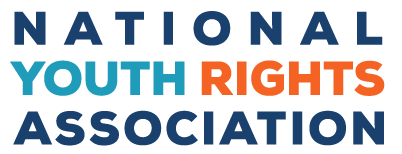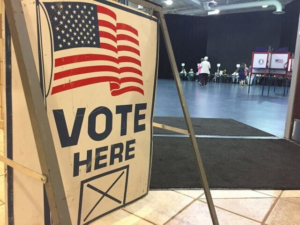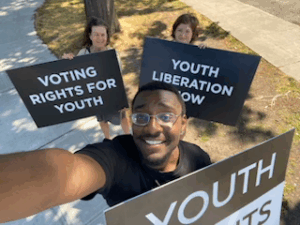The current Supreme Court case Chiles v. Salazar centers on Colorado’s 2019 law banning licensed mental health professionals from practicing conversion therapy on minors. Conversion therapy refers to attempts to change a person’s sexual orientation or gender identity, a practice widely condemned by medical and psychological organizations as harmful. Kaley Chiles, a Colorado counselor, challenged the law without it being enforced against her, arguing that it violates her First Amendment rights by restricting what she can say to clients during therapy sessions.
The case has reached the Supreme Court after lower courts upheld Colorado’s ban, finding it a valid regulation of professional conduct meant to protect minors. Chiles contends that the law unfairly targets one viewpoint, speech aimed at changing orientation, while allowing affirming speech, making it unconstitutional viewpoint discrimination. The justices agreed to hear the case to decide whether such bans improperly restrict free speech or fall within a state’s power to regulate professional practices to prevent harm. A ruling could have sweeping implications for conversion therapy bans in over 20 states and for broader questions about how much speech by licensed professionals can be regulated.
Conversion Therapy
Conversion therapy refers to a set of practices aimed at changing an individual’s sexual orientation, gender identity, or gender expression. An estimated 698,000 adults have received conversion therapy, with about 350,000 of those having received conversion therapy as adolescents. Conversion therapy is directed at LGBTQ+ people, and typically takes the form of counseling sessions where a licensed professional, religious leader, or unlicensed “life coach” attempts to steer a person toward heterosexuality or alignment with their sex assigned at birth. Methods include talk “therapy”, behavioral conditioning, prayer, and other interventions that frame same-sex attraction or gender diversity as problems to be “fixed.” While today’s most common approaches rely on mainly verbal techniques, that’s not what conversion therapy used to be.
Modern conversion therapy is rooted in older, highly coercive methods that sought to “cure” same-sex attraction through physical or psychological punishment. In the mid-20th century, particularly the 1950s through 1970s, certain psychiatrists and researchers experimented with aversion therapy, which paired images of same-sex intimacy with painful or unpleasant stimuli. Electroshock treatments were one of the most infamous techniques: individuals were shown homoerotic images and subjected to electric shocks to create a conditioned aversion to same-sex attraction. Others were given nausea-inducing drugs at the same time as being shown same-sex imagery, in an attempt to associate same-sex attraction with physical sickness.
As late as the 1960s, individuals were subjected to hormone treatments meant to “normalize” their desires, institutionalized in psychiatric wards, forcibly sterilized or given lobotomies. Certain religious programs used public shaming, solitary confinement, or intense prayer “boot camps” aimed at breaking down a person’s identity. Survivors of these practices often report long-term trauma, including post-traumatic stress disorder, depression, and deep shame about their sexual orientation or gender identity.
Supporters of conversion therapy often justify it on religious or moral grounds, claiming individuals should have the option to pursue therapy that aligns with their faith-based values. However, mainstream medical and mental health organizations, including the American Psychiatric Association, the American Psychological Association, and the American Academy of Pediatrics, strongly reject these practices as unsafe and ineffective. Decades of research show that conversion therapy does not change sexual orientation or gender identity, but it can cause serious psychological harm. Survivors frequently report long-term consequences such as depression, anxiety, feelings of shame, internalized homophobia, and heightened risk of suicide.
A Stanford-led study of over 4,000 LGBTQ adults found that those who had experienced conversion practices had higher rates of depression, PTSD symptoms, and suicidal ideation. Additionally, The Williams Institute reports that among LGB people in the U.S, those who experienced conversion therapy were nearly twice as likely to attempt suicide, and had greater odds of suicidal ideation, planning, or attempts compared to those who did not.
Conversion Therapy and Youth Rights
As of now, 23 U.S. states (in addition to DC and Puerto Rico) have laws that fully prohibit licensed mental health professionals from providing conversion therapy to minors, and this is for good reason. When it comes to minors receiving conversion therapy, it is almost never out of their own volition. This type of “therapy” usually stems from a religious family believing that their child is amoral for being homosexual, or resonating with any type of queer identity. These families actively disregard their child’s sense of self and personal identity, in favor of forcing their child into their exact moral norms. These parents do not have the best interest of their children at heart.
A study from the Family Acceptance Project found that LGBT youth whose parents tried to change their sexual orientation (whether alone or in conjunction with therapy or religious interventions) reported much higher risks of suicide attempts, depression, and lower life satisfaction later. 48% of youth reporting parental efforts to change orientation attempted suicide, compared with 22% of LGBTQ youth who reported no conversion experiences. Those who experienced both parental efforts and external therapy/religious conversion attempts had even higher rates, with 63% in that group attempting suicide.
These statistics are deeply disturbing. Over half of the minors involved in that study attempted to end their own lives as a result of their parents’ actions. These disastrous effects are not unknown; the danger of conversion therapies have been widely studied and reported on for decades. The deadly effect conversion therapy has on young people is precisely why it is banned for them in almost half of U.S. states.
Parents are supposed to protect their children, they’re supposed to make sure they are in good physical and mental health. If a child is questioning their identity, they deserve to have a parent who will help them through their troubled times while prioritizing what is best for the child, rather than attempting to shut them down with brainwashing. Lifting any ban on conversion therapy is an attack on all youth and their rights, and would prioritize complete parental ownership over the lives of young people. We urge the Supreme Court to uphold Colorado’s conversion therapy ban.
The text of The Supreme Court Must Not Lift Conversion Therapy Bans © 2025 by Xillion is licensed under CC BY-SA 4.0
We’d like to announce that we are now partnered with The Ageless Heaven Discord Server, where you can discuss youth rights with like-minded individuals.






This is beautiful